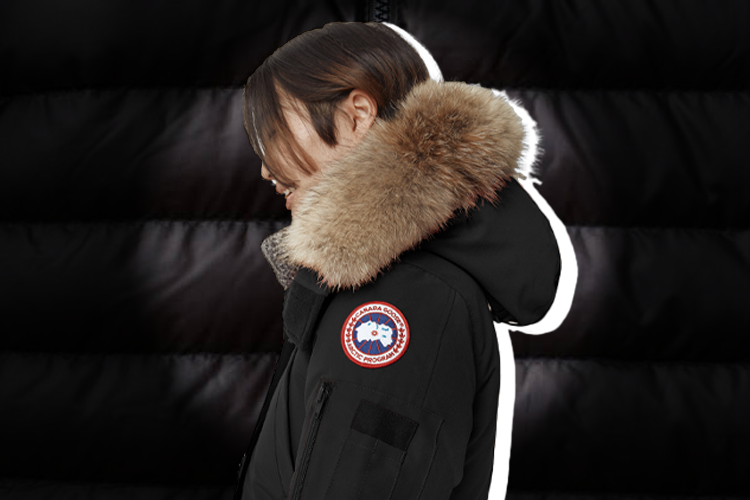Do You Even Have a Big, Black Puffer Jacket?
Graphic by: Agnes Lee
If you walk down Sheridan road on any day when temperatures are below freezing, you will see a flock of Canada Geese. No, not those nuisances you have to avoid on Norris East Lawn –– Canada Goose puffer jackets.
Regardless of the price tag and lack of environmental friendliness, the jackets are massively popular on Northwestern’s campus, illuminating a blatant example of performative activism by these students who develop a level of cognitive dissonance in regard to their positionality within systems of class and status.
Canada Goose, first known as an outerwear company for scientists bearing extreme negative weather conditions in the Antarctic, originated in 1957. The company evolved into a publicly recognized brand when actors started wearing the coats on Hollywood movie sets. The jacket is habitually seen on celebrities such as Rihanna, JLo, Miley Cyrus, Andrew Garfield and Ben Affleck. Canada Goose has always been a symbol of the wealthy and the extraordinary. When the jackets began to be mass-produced, they retailed for upwards of $2000. With additional ad-ons, such as a fur hood, the prices can increase to hundreds of dollars in addition to the sticker price.
Not only is Canada Goose incredibly expensive compared to similar outerwear brands such as North Face, the brand is also unethical. The coyote and bird down that fills the jackets is harvested by cruelly catching and slaughtering the animals. In June, Canada Goose pledged to incrementally phase out their production of fur coats, but because the brand is well known for their down coats, they will undoubtedly continue collecting the material in inhumane and unsustainable ways. Canada Goose jackets demonstrate that the upper class prioritizes symbols of wealth and status over the ethical ramifications of their actions.
Northwestern and other elite institutions are microcosms of a larger societal issue ––especially elitism. Students, as well as many other Americans in the upper echelons of society, often signal wealth in order to appear successful while still attempting to maintain an air of morality. Northwestern is considered one of the most liberal campuses in the country. Nonetheless, it contains an incredibly wealthy student body, with 16% of students being in the top 1% and roughly 60% of students paying full tuition (a whopping $83,838 per year, which is over double the median American income). Although many students maintain neo-liberal ideas, this activism does not usually extend to opening their pockets; students want to appear to be “woke” without actually using their wealth and privilege to make tangible change. Ergo, the Canada Goose jackets demonstrate that expressing and maintaining a position of wealth is deemed more important than acting ethically.
Blanka Jarmoszko (Weinberg ‘24) is an international student on full financial aid who thinks Canada Goose coats are a thinly veiled symbol of class status.
“First off, the jackets are ugly. If you’re going to spend that much on a jacket you might as well look good,” says Jarmoszko. Jarmoszko worked in a retail store during high school and says Canada Goose jackets have the same level of comfort and warmth as more affordable coats, such as The North Face, Patagonia, and Superdry, L.L. Bean, and Uniqlo. She says the main appeal of Canada Goose is the logo, which signals that the wearer is part of the upper class. That the jackets are ugly, Jarmoszko thinks, further demonstrates that people wear them because they are on-trend, not just because they want to stay warm.
Jarmoszko believes there’s no reason to buy down or fur when alternative options exist. “It shows that people here care more about how they are perceived than being socially conscious,” says Jarmoszko. The American obsession with consumerism and appearing wealthy contributes to this phenomenon. If signaling wealth takes precedence over signaling virtue, how ingenuine are the efforts of wealthy Northwestern students to be socially and ethically conscientious?

